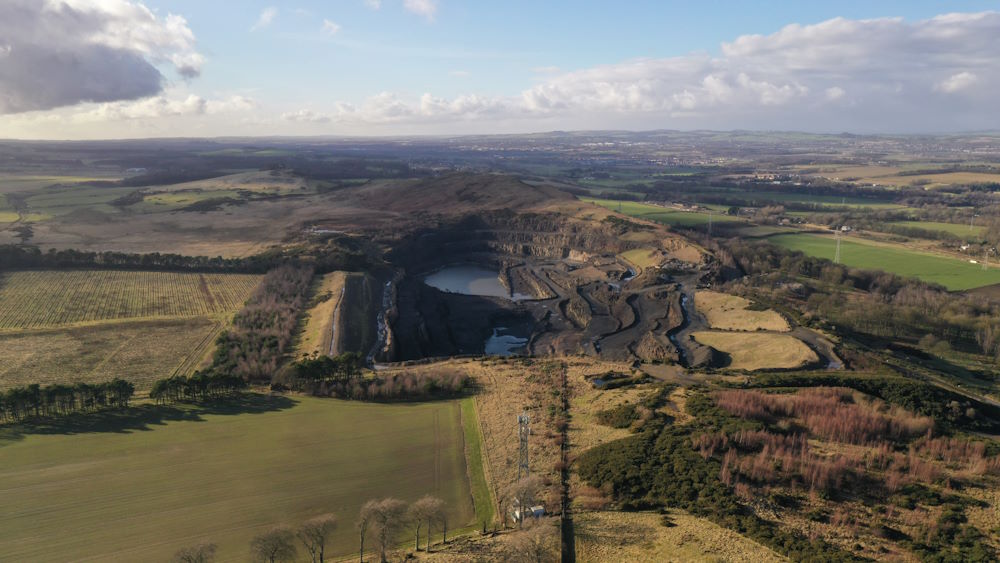Restoration
Ravelrig Quarry
Restoration
Restoration of a significant part of the quarry can be achieved at an early stage (partly in year 1 and fully around year 5). After materials have been placed, they can be graded to create suitable slopes and landforms. Soil is then spread on the new surfaces and seeded with appropriate grasses and plants at an early stage.
The proposed restoration scheme leaves some exposed rock face for habitats, along with the creation of gentler slopes in the north. We have undertaken investigations and monitoring to predict future water levels and have designed the new slopes to provide some shallow areas that will create a more natural landscape and additional benefits for biodiversity. The mix of bare rock and scree slopes, extensive areas of tree and shrub planting, species rich grassland and a waterbody with an extensive shallow area will enhance the biodiversity at the site.
The Ravelrig quarry bowl is quite an impressive view. We aim to make the most of this by enhancing public access with footpath links, circular routes and viewing points. We propose adding information boards so that people can learn more about the geology, landscape, and archaeology at the site.
Biodiversity
Tarmac aims to maximise biodiversity across its portfolio, working with in house and external ecologists and specialists. In addition, recent Scottish planning policy now requires that any new scheme must show a Biodiversity Net Gain.
The proposed scheme would extend the quarry toward the south and the A70 but would not go beyond the current field boundary towards Balerno. At present this field is mostly filled with commercial Sitka spruce trees planted just a few years ago.
Although the new extension would mean removing the Sitka spruce, the area currently has limited biodiversity value as it was planted to be a commercial woodland.
The mature trees on the side of the A70 would not be affected within our proposals. The two belts of trees running north-south on the field boundaries would stay but a small section, around 50 metres in length, would need to be removed.
We would also need to remove the belt of trees planted by Tarmac in 2010. As part of the restoration plan, we will be looking for opportunities to plant more trees in other areas to help maintain the biodiversity at the site.
We propose to create other habitats that will help to add more biodiversity benefits to the area. Ecological surveys of the affected area have been carried out to ensure that no important species are affected, and to advise on any mitigation activities that might be required. needed.



